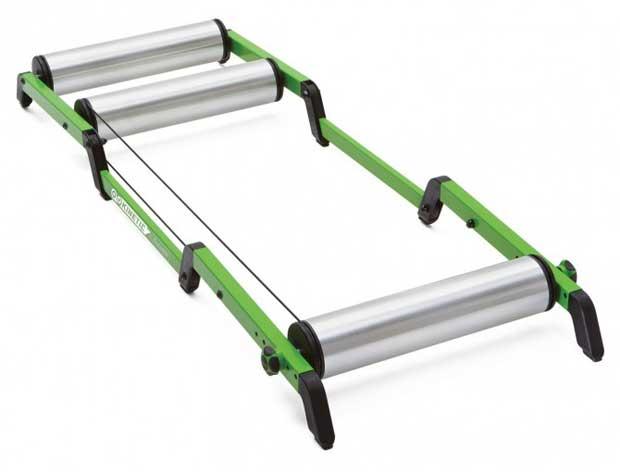
1 of 6 photos
<
>
Rollers are the psychic opposite of what most appeals to triathletes. This is the category of stationary bike trainer that least given to technological advancement. We have running shoes (e.g., Altra Halo), sunglasses (e.g., Recon Jet), and even swim goggles (e.g., Swim Iolite) that are more sophisticated than the simple roller.

2 of 6 photos
<
>
Once a cyclist gets past the initial thought of a roller being an antique, it is according to some the most effective indoor bike trainer available.

3 of 6 photos
<
>
The basic roller consists of three metal or plastic drums, two bars, and couple of bolts. It operates in a very simple fashion: Keep pedaling or fall off! It may take a couple of times to get use to the feeling and balance of riding on rollers but the basic roller is a staple of quite few cycling traditionalists. A quick tip first time users: Consider starting in a doorway or an area with a soft landing.

4 of 6 photos
<
>
While simple by design, technology has elbowed its way into rollers with resistance units and there are even some smart rollers. One of the first resistance-based rollers was the Kreitler Kat 1 and unlike most of the current resistance based rollers which use magnetic resistance, the Kat 1 uses a flywheel with a headwind fan to mimic air drag.

5 of 6 photos
<
>
With most of the talk focusing on smart trainers (i.e. trainers that can automatically control resistance), it is no surprise that Elite, a very popular European brand, has a smart roller called the Real E-Motion B+. It looks interesting, but is not currently available in North America. See here for an explanation of the confusing licensing agreement between Eite and Inside Ride.

6 of 6 photos
<
>
There is little cost savings versus a wheel-on trainer and a nice set of rollers as both can run you close to $300 and more. There are a number of well-known brands producing rollers, including Kurt Kinetic (below), Tacx, and CycleOps, along with many others.
PREV
NEXT
1 of 6 photos






>
<


